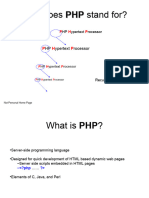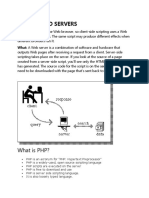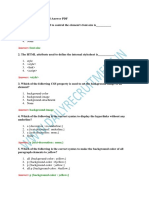0% found this document useful (0 votes)
21 views62 pagesT1 PHP
PHP stands for Hypertext Preprocessor and is a server-side scripting language used for web development. It evolved from Perl scripts in 1994 and has undergone several updates to include object-oriented programming features. The document outlines the installation, basic syntax, variables, constants, operators, and the workflow of PHP in processing web requests.
Uploaded by
prashantkumar.prk1602Copyright
© © All Rights Reserved
We take content rights seriously. If you suspect this is your content, claim it here.
Available Formats
Download as PPT, PDF, TXT or read online on Scribd
0% found this document useful (0 votes)
21 views62 pagesT1 PHP
PHP stands for Hypertext Preprocessor and is a server-side scripting language used for web development. It evolved from Perl scripts in 1994 and has undergone several updates to include object-oriented programming features. The document outlines the installation, basic syntax, variables, constants, operators, and the workflow of PHP in processing web requests.
Uploaded by
prashantkumar.prk1602Copyright
© © All Rights Reserved
We take content rights seriously. If you suspect this is your content, claim it here.
Available Formats
Download as PPT, PDF, TXT or read online on Scribd
/ 62






















































































